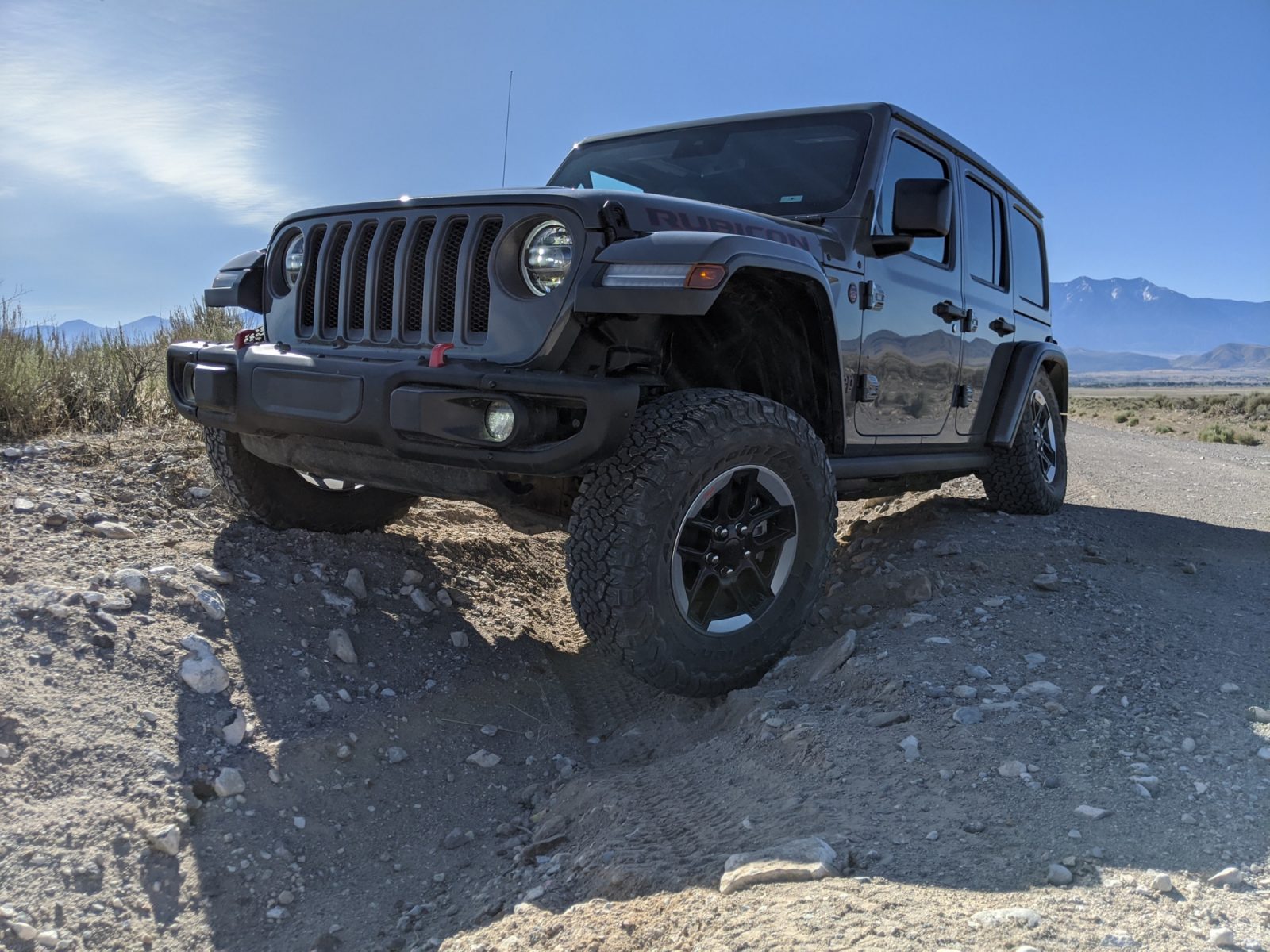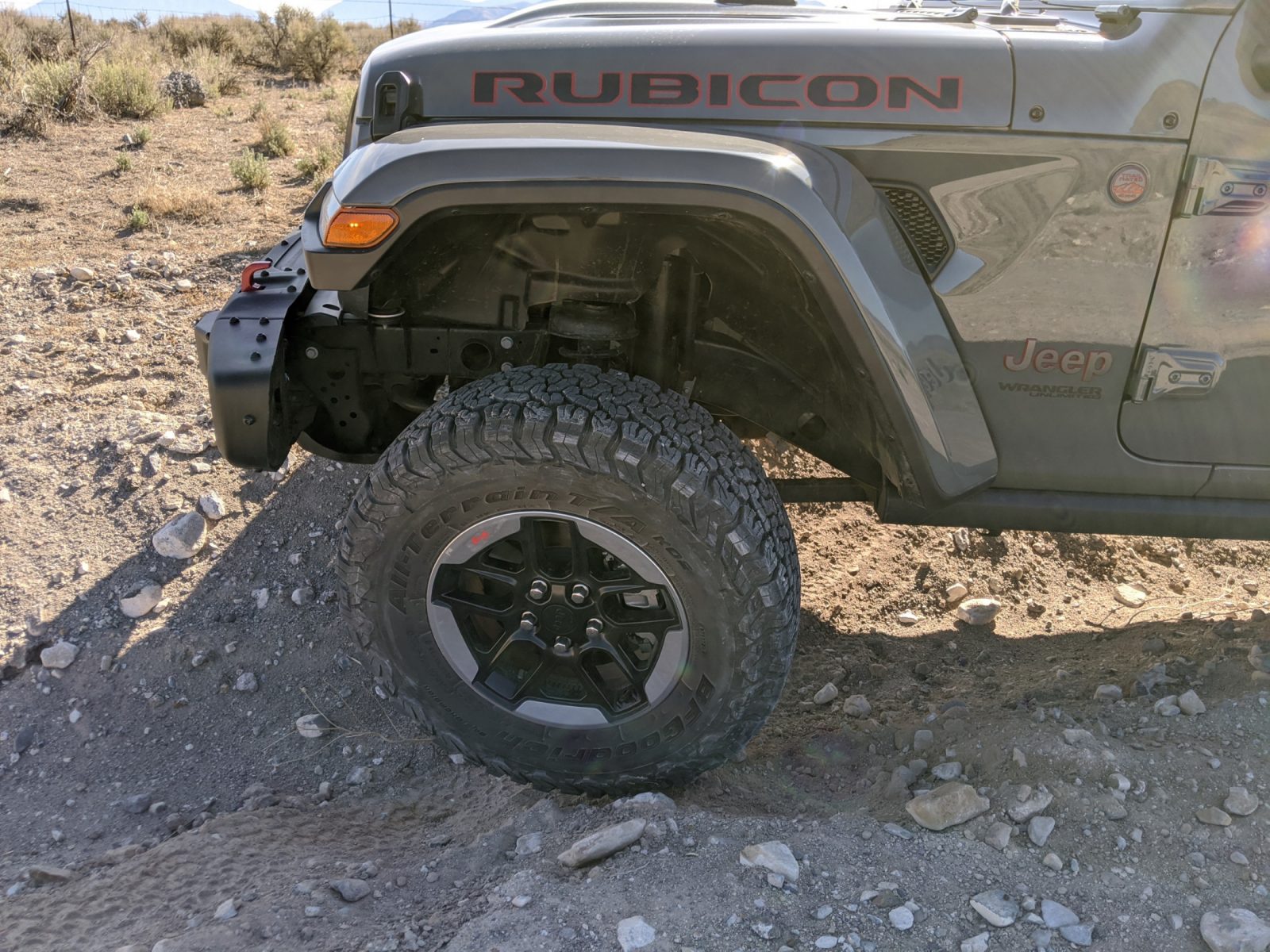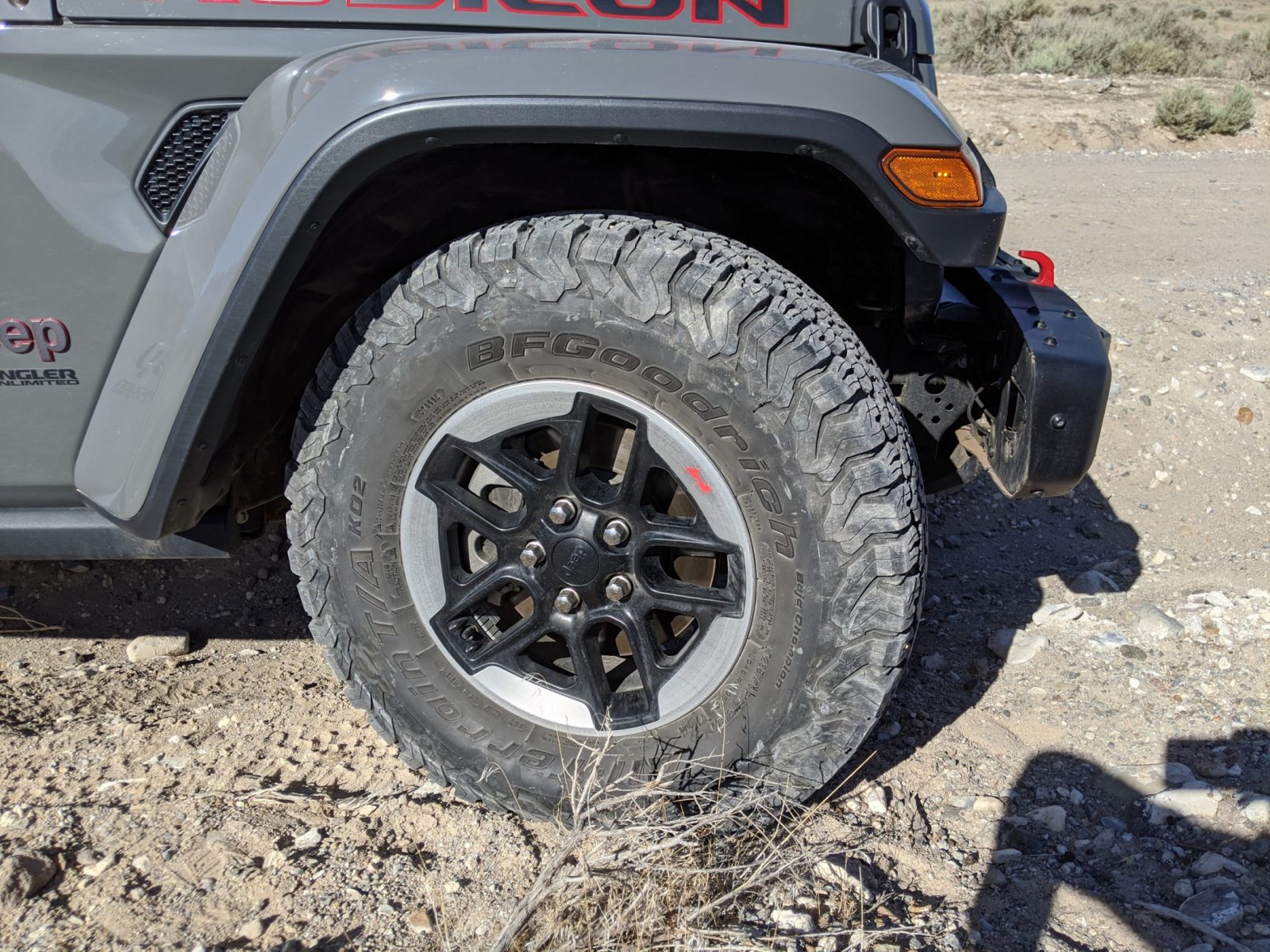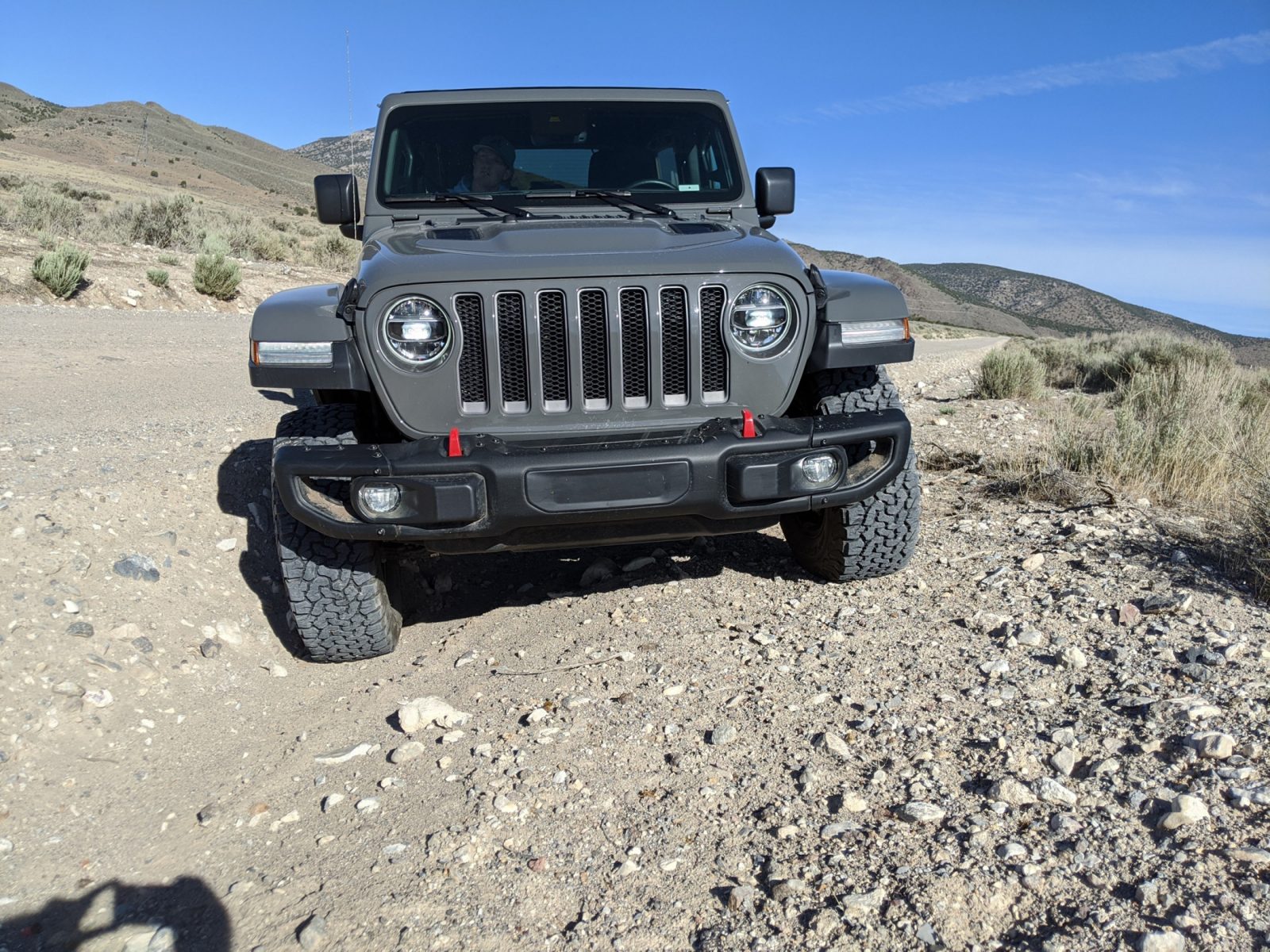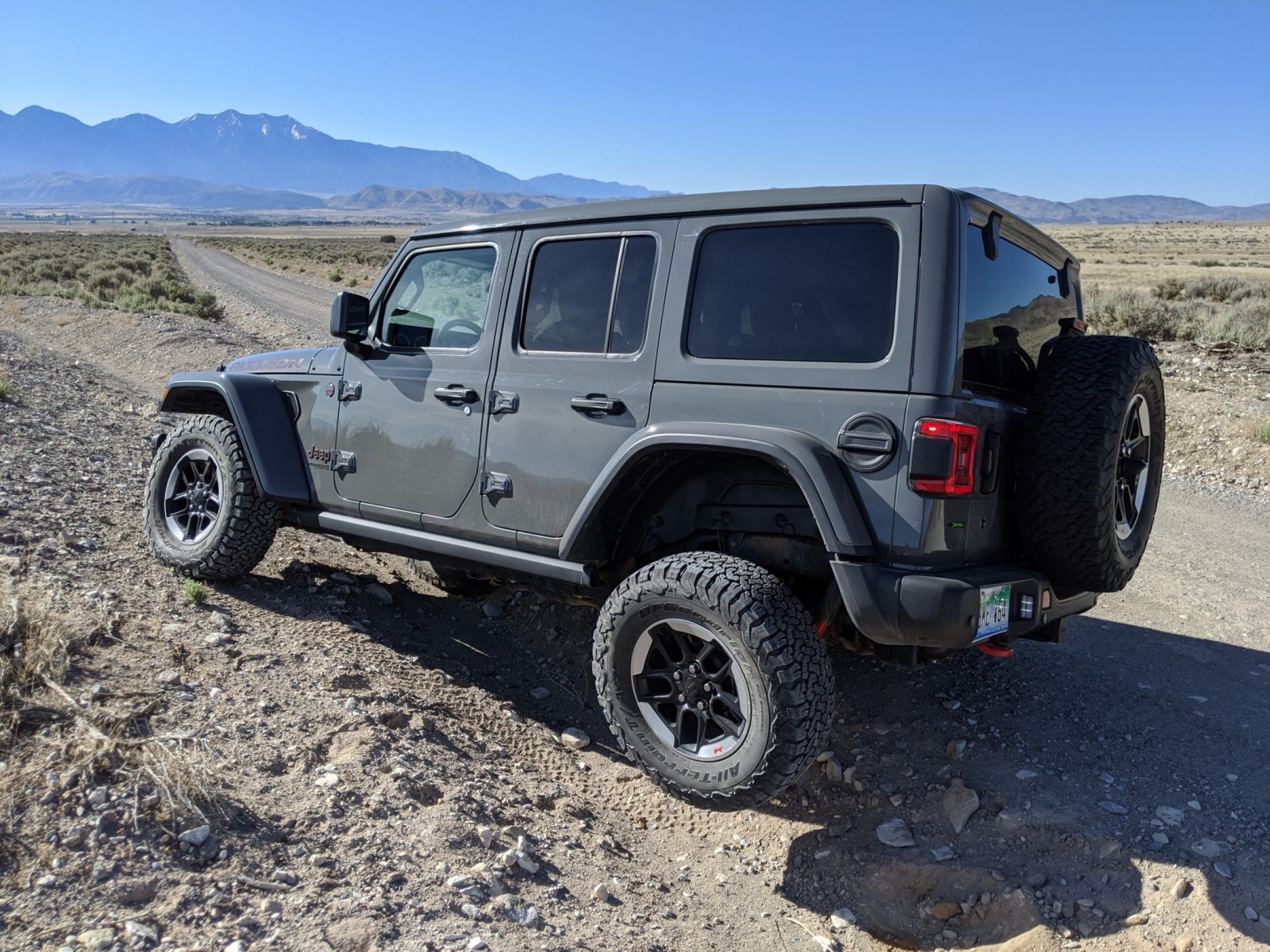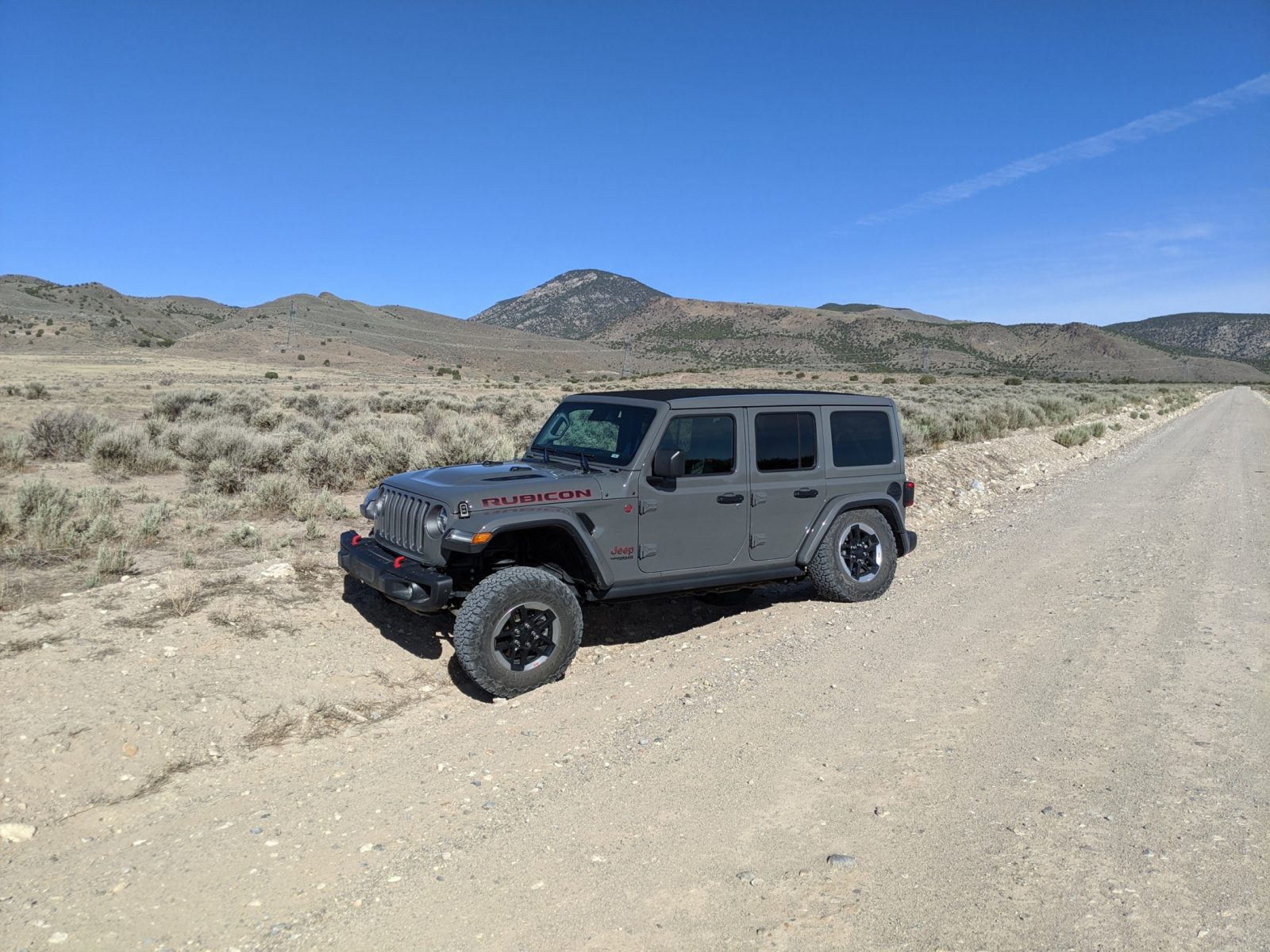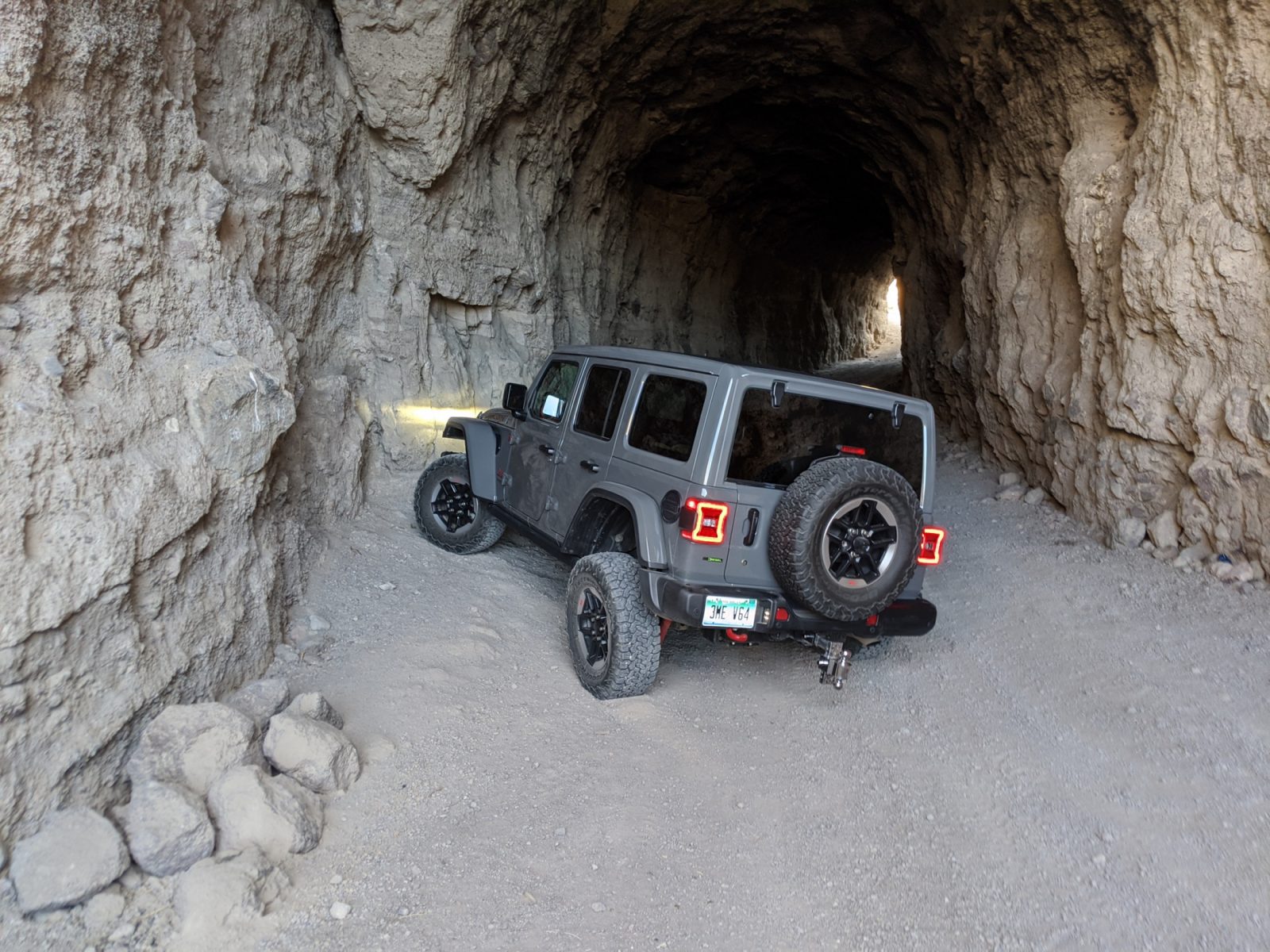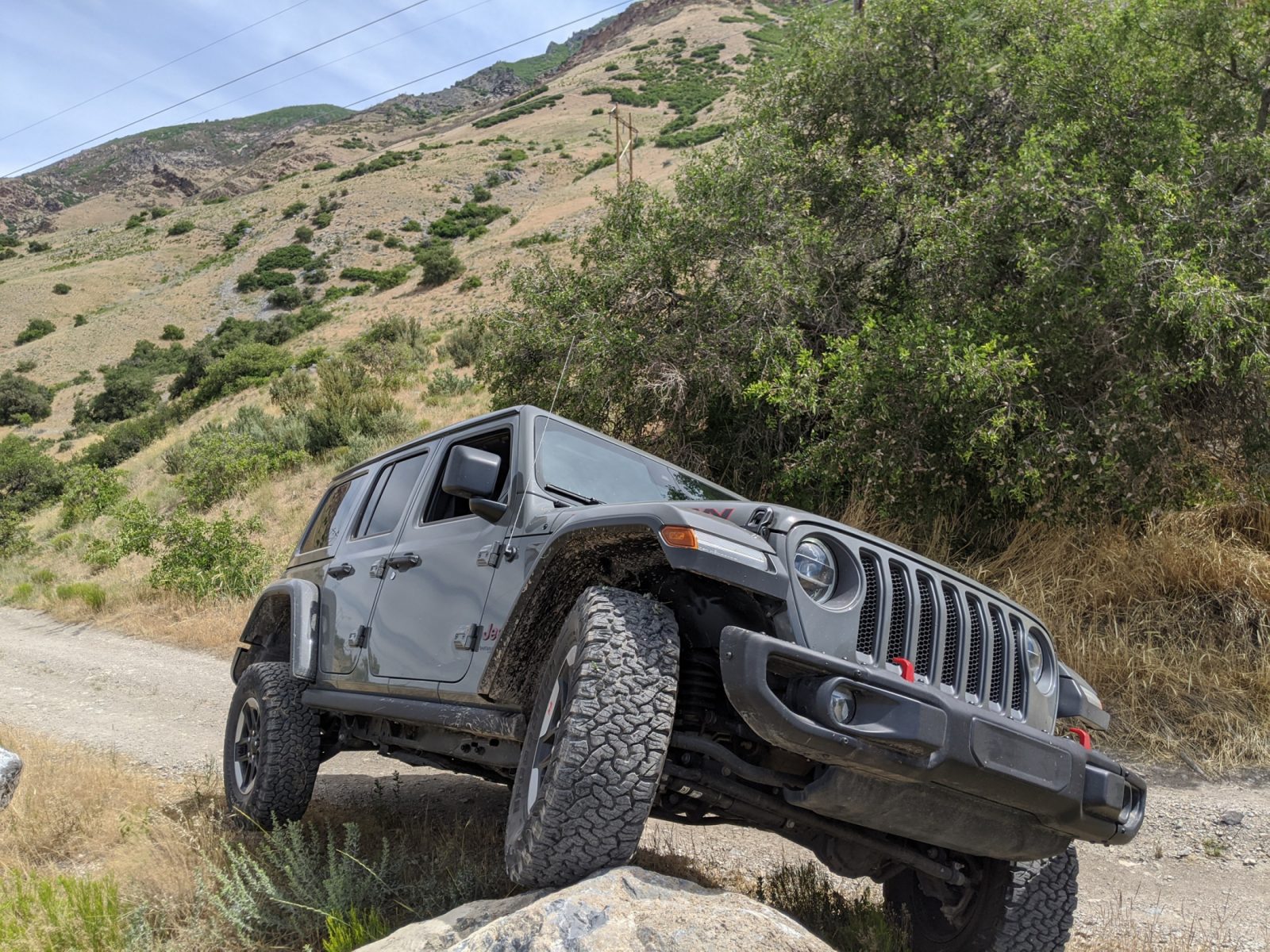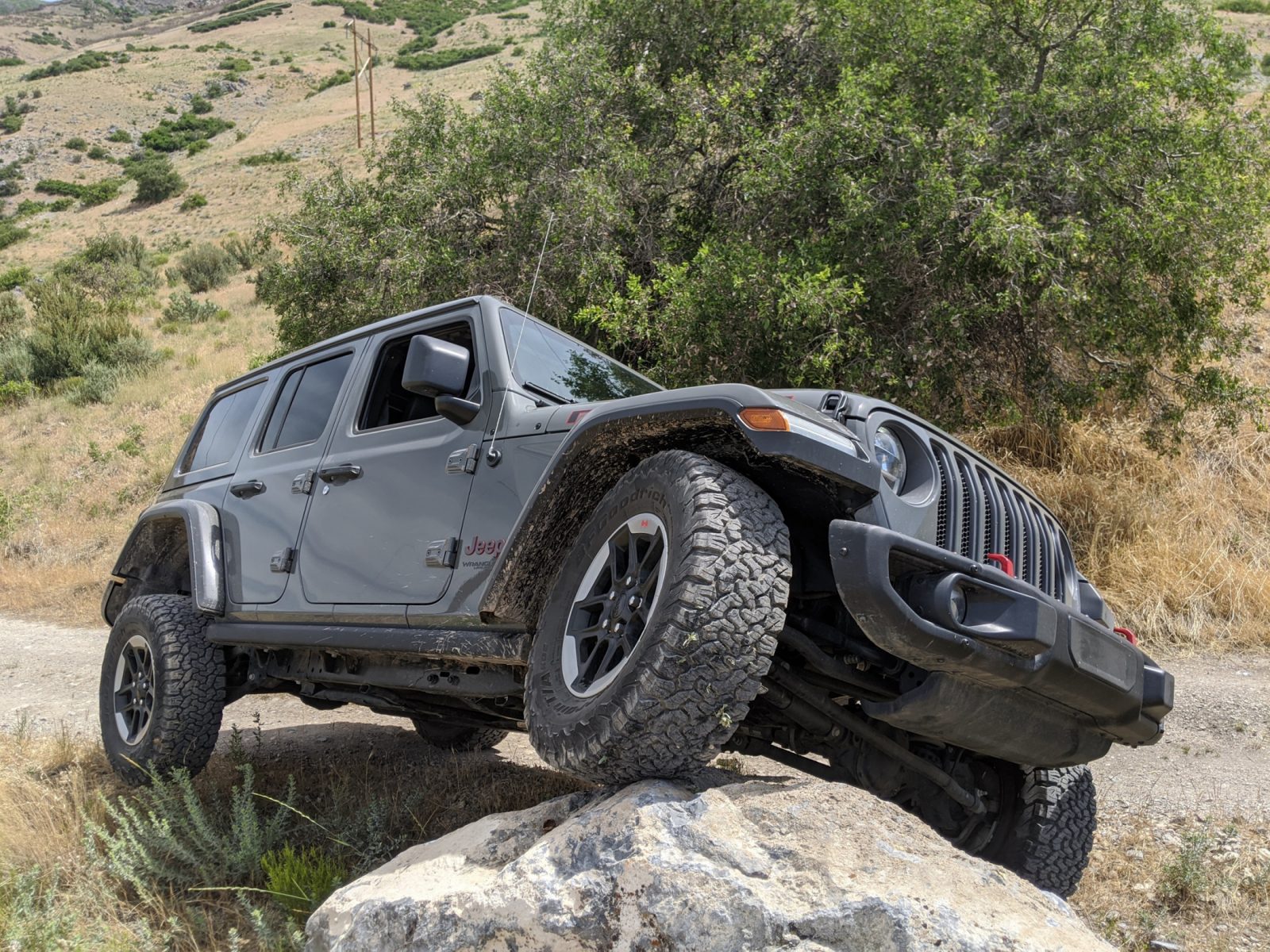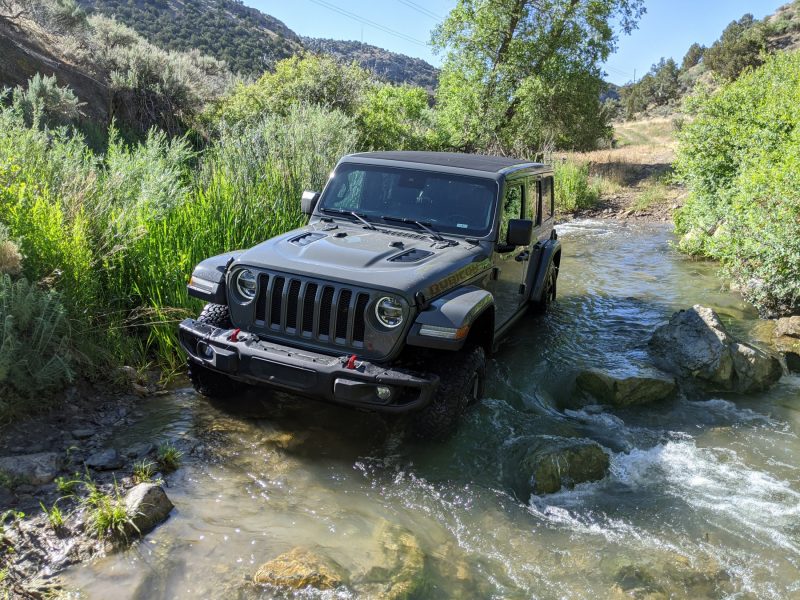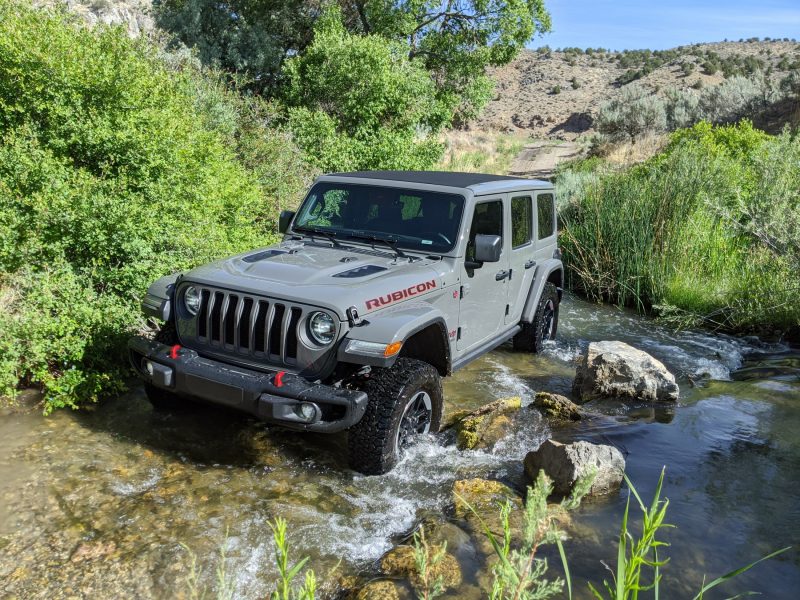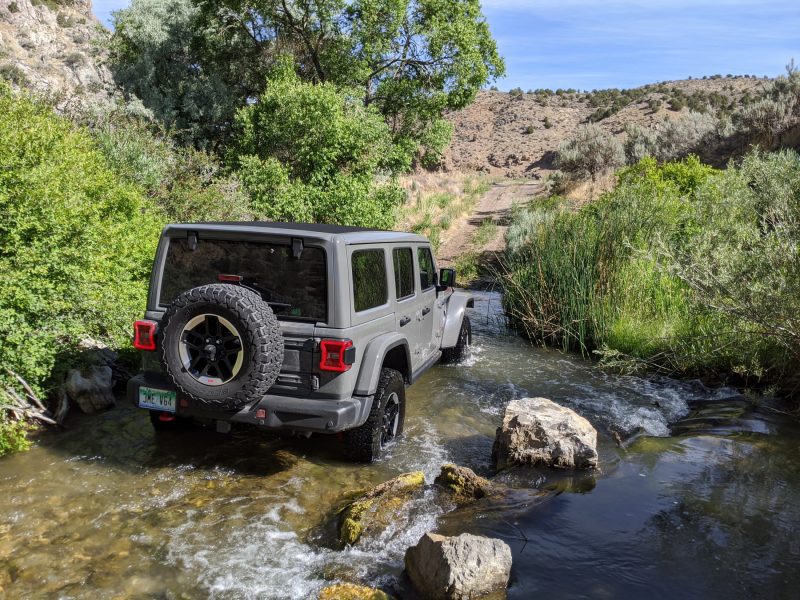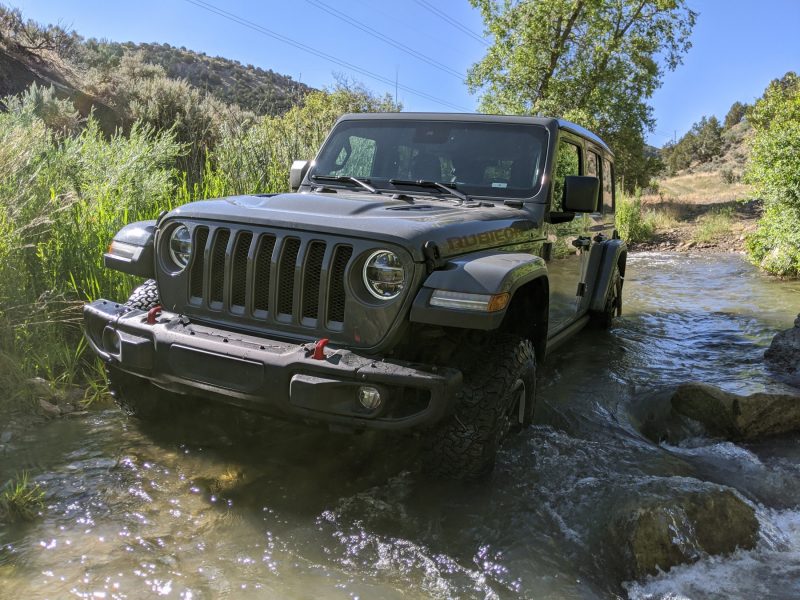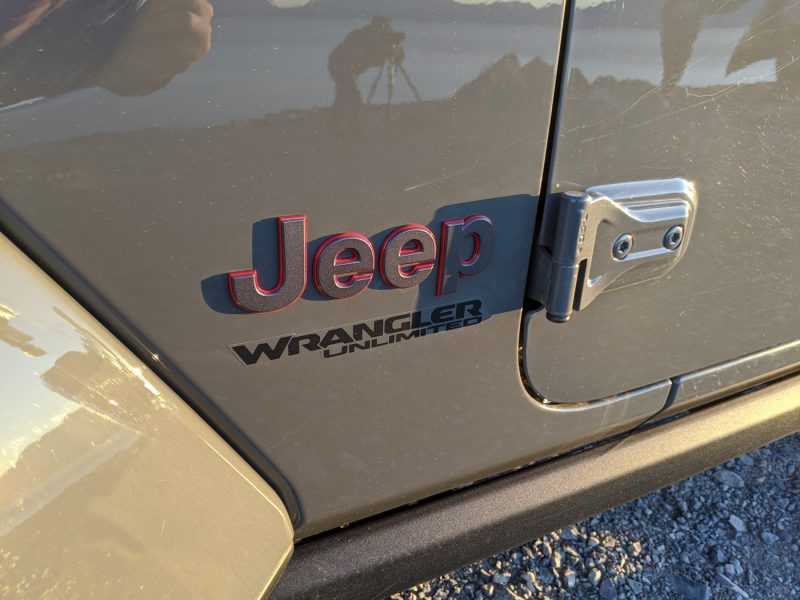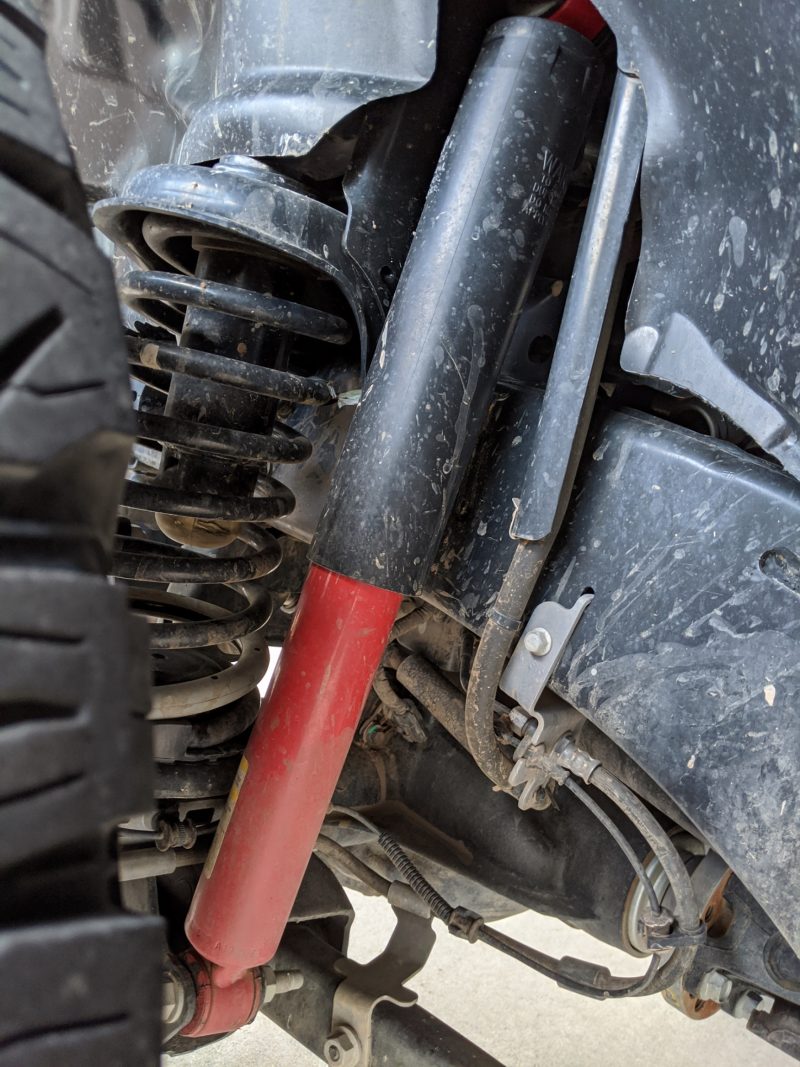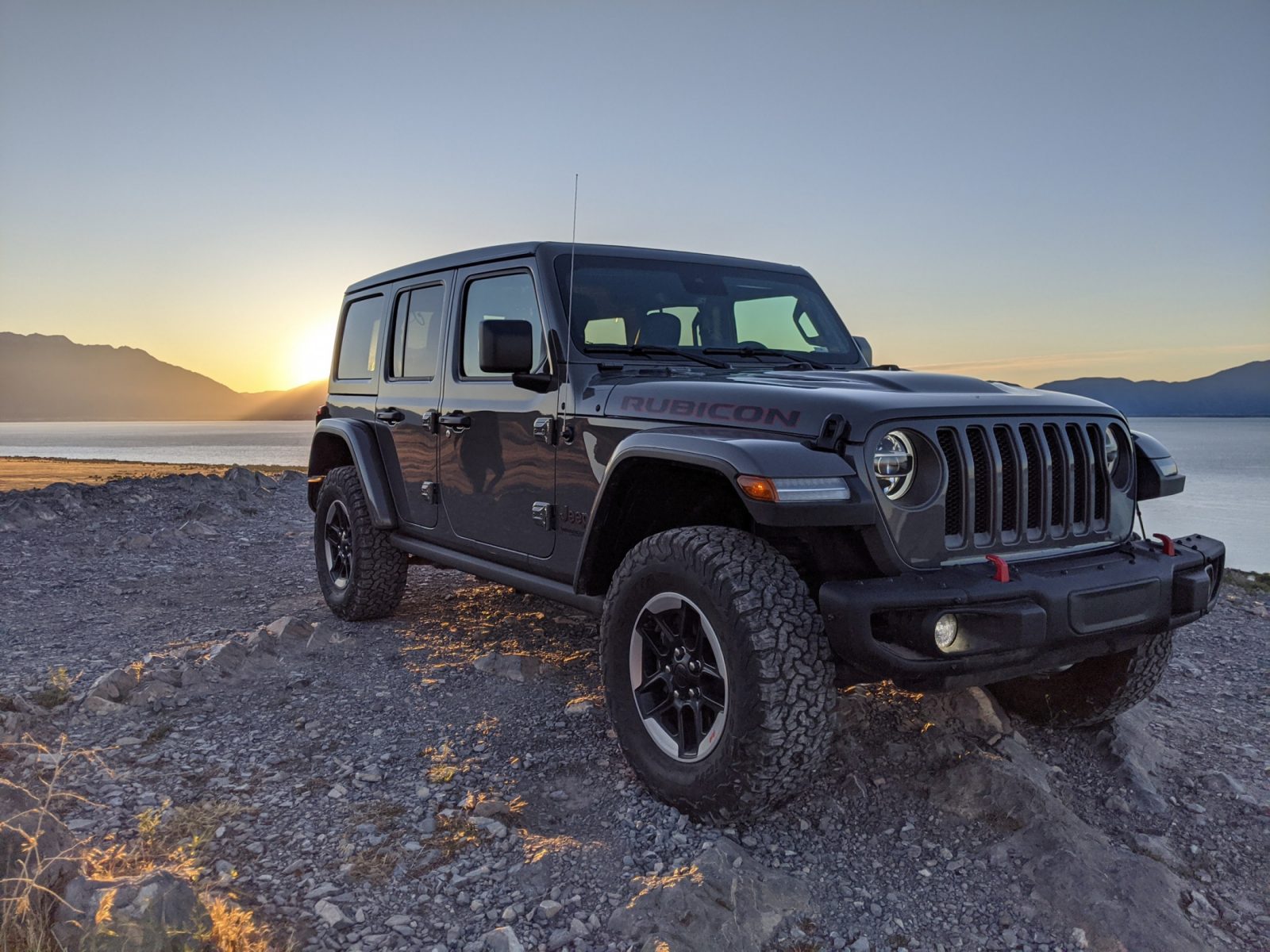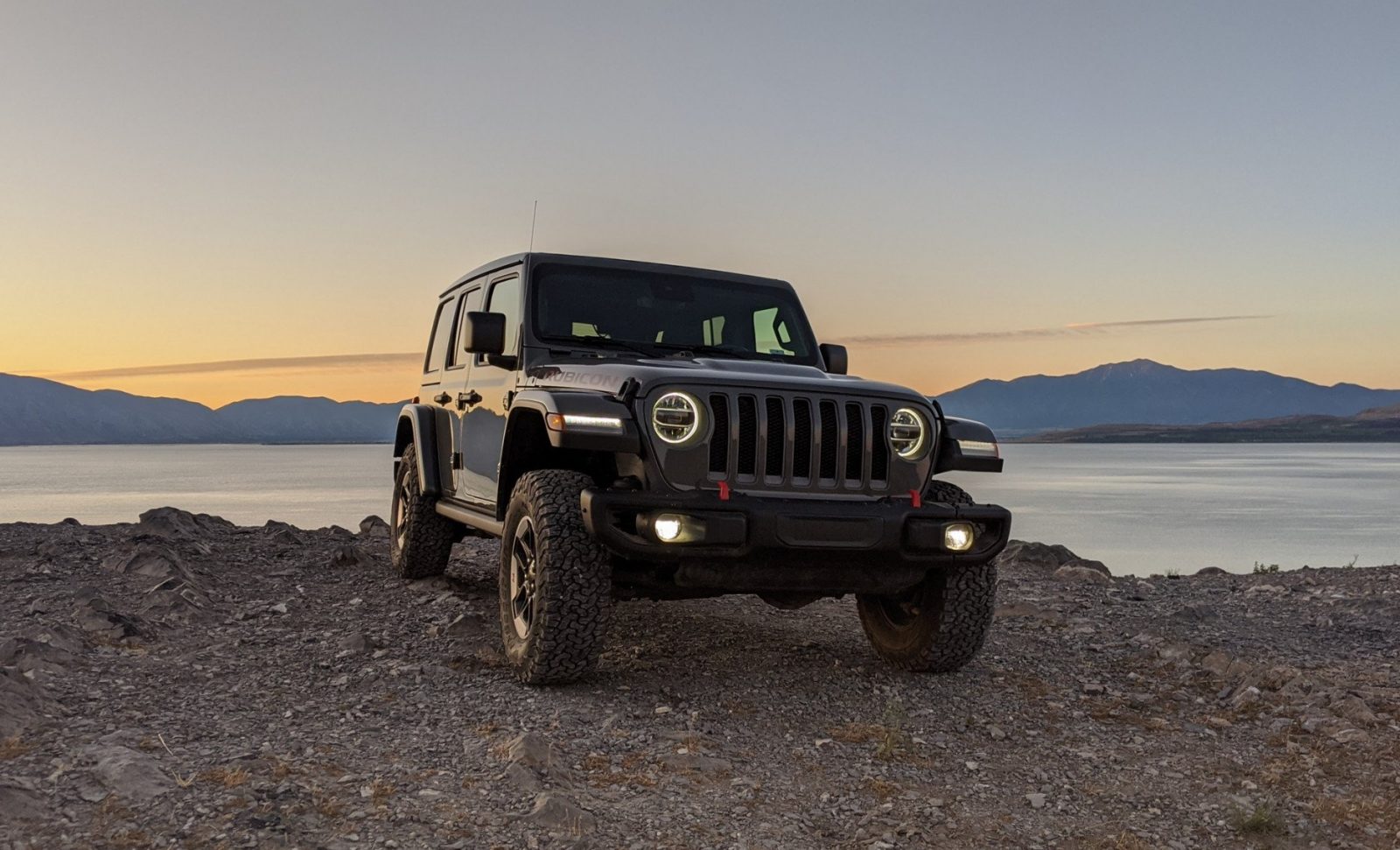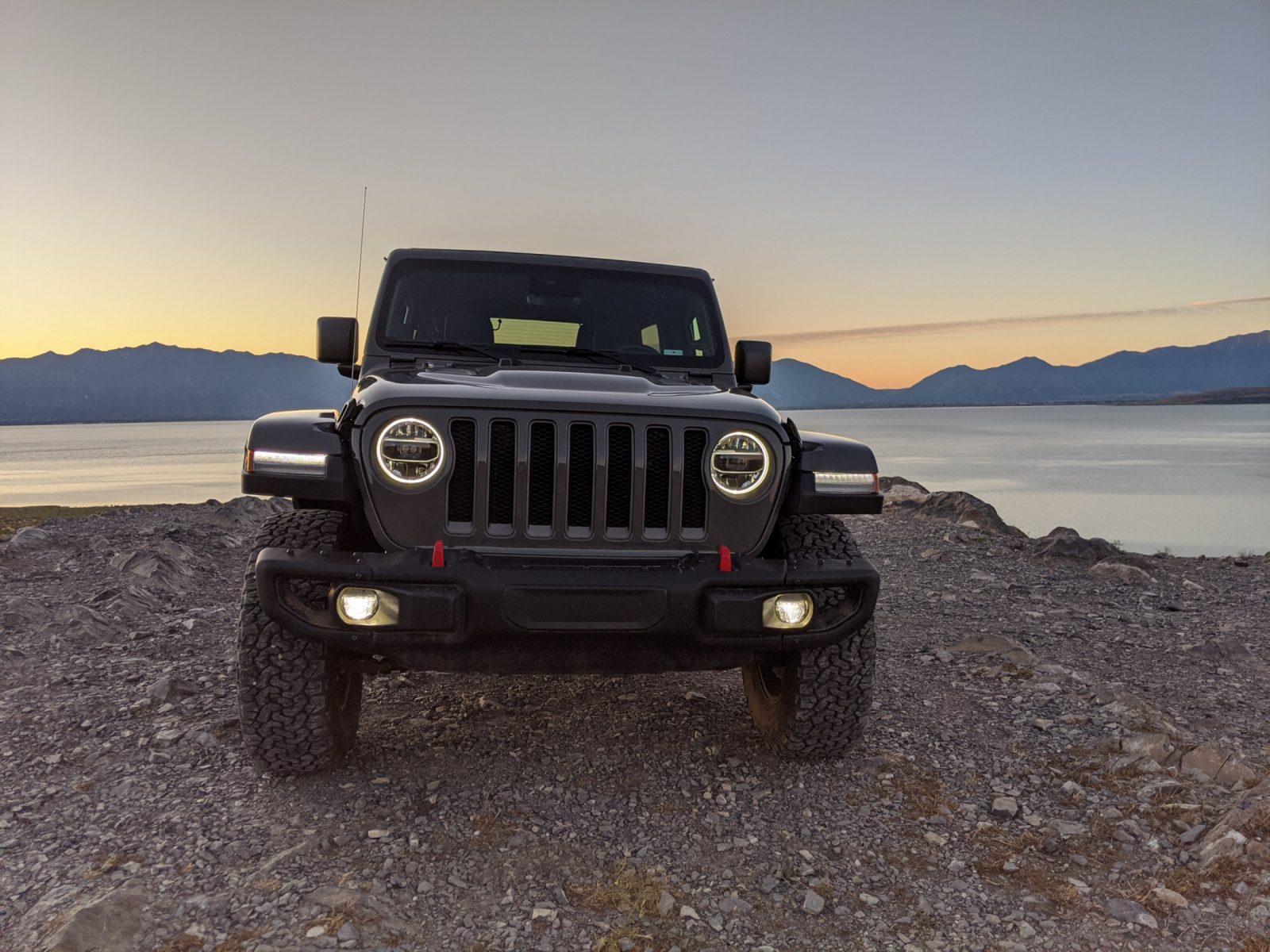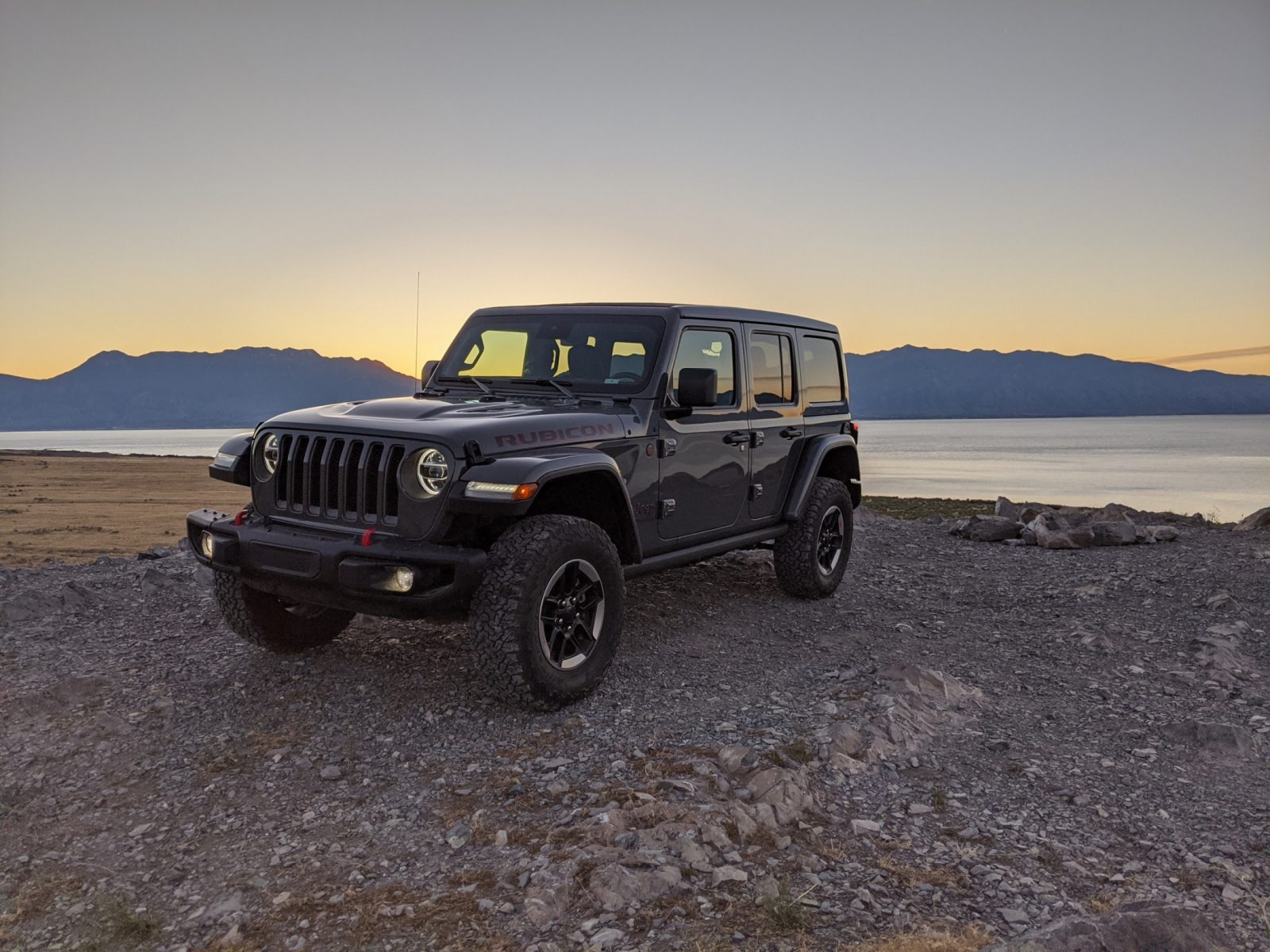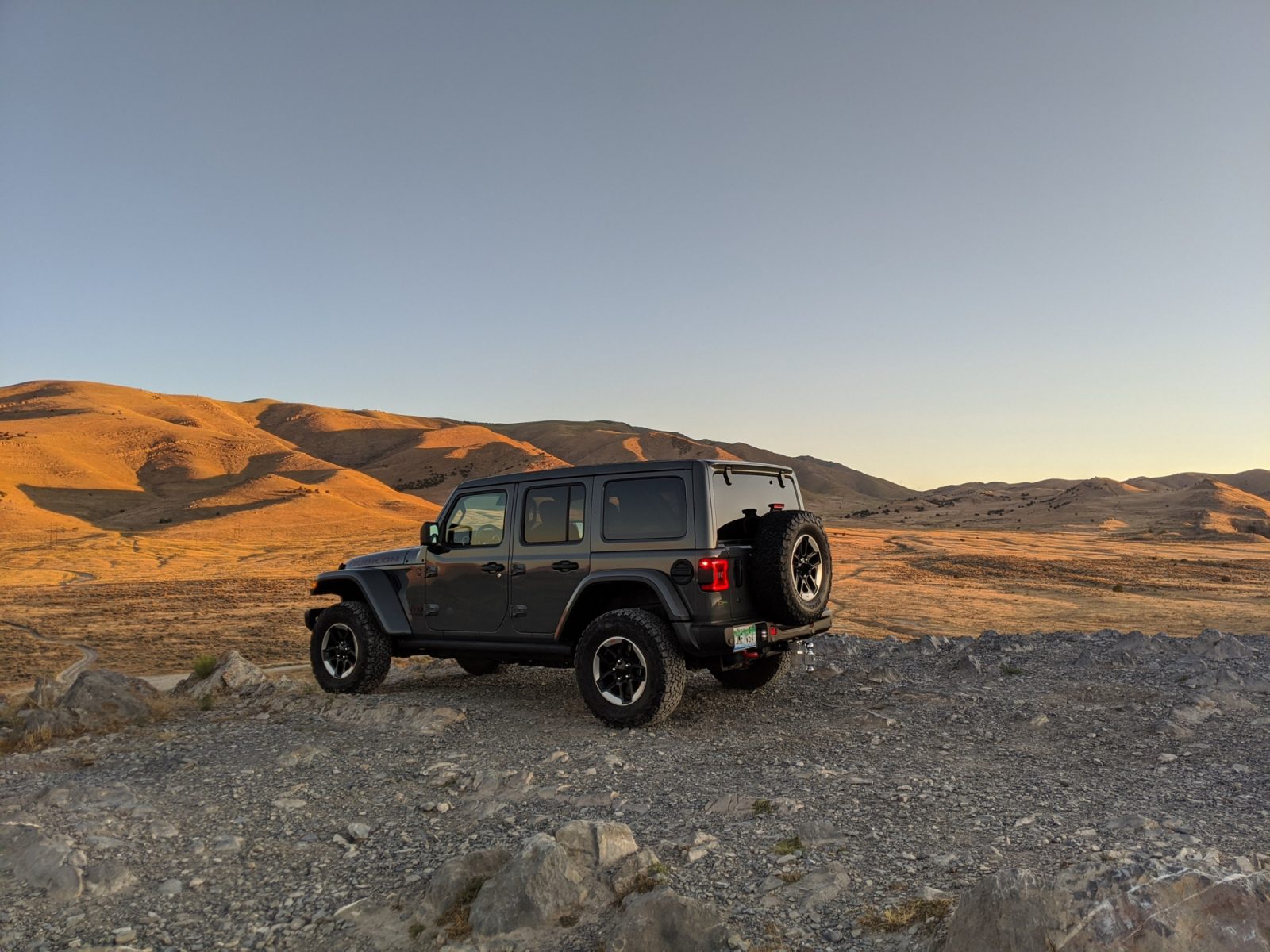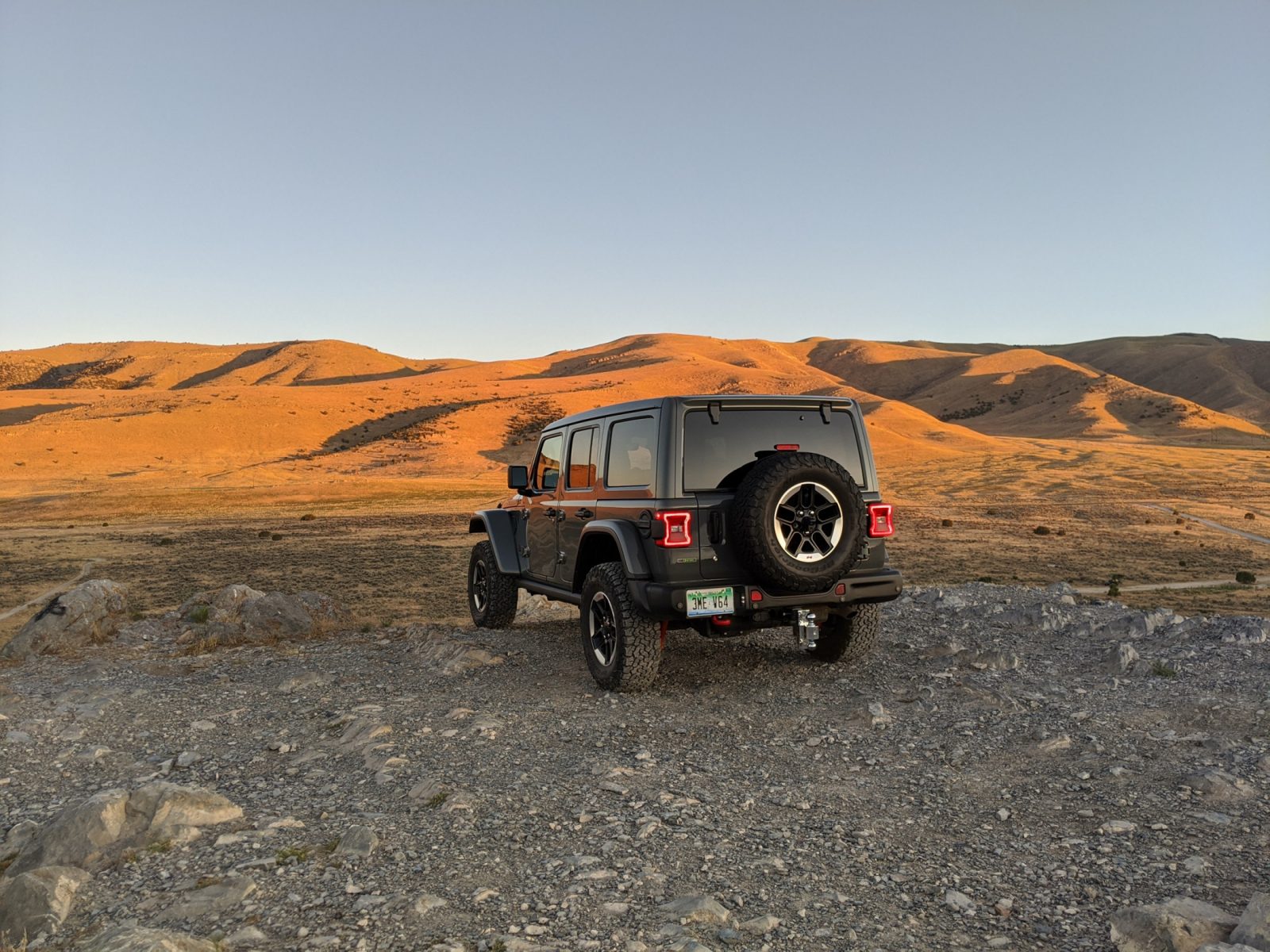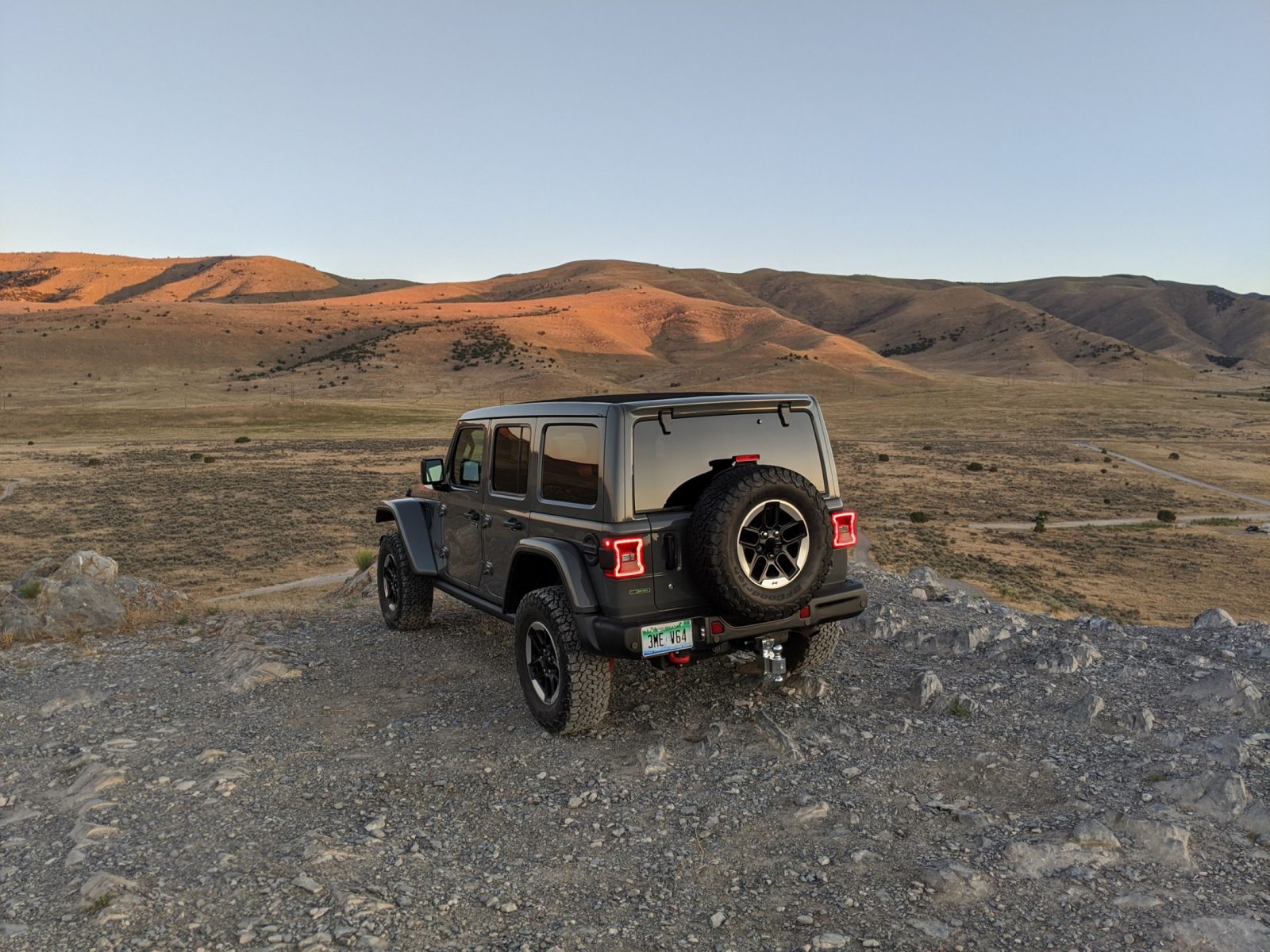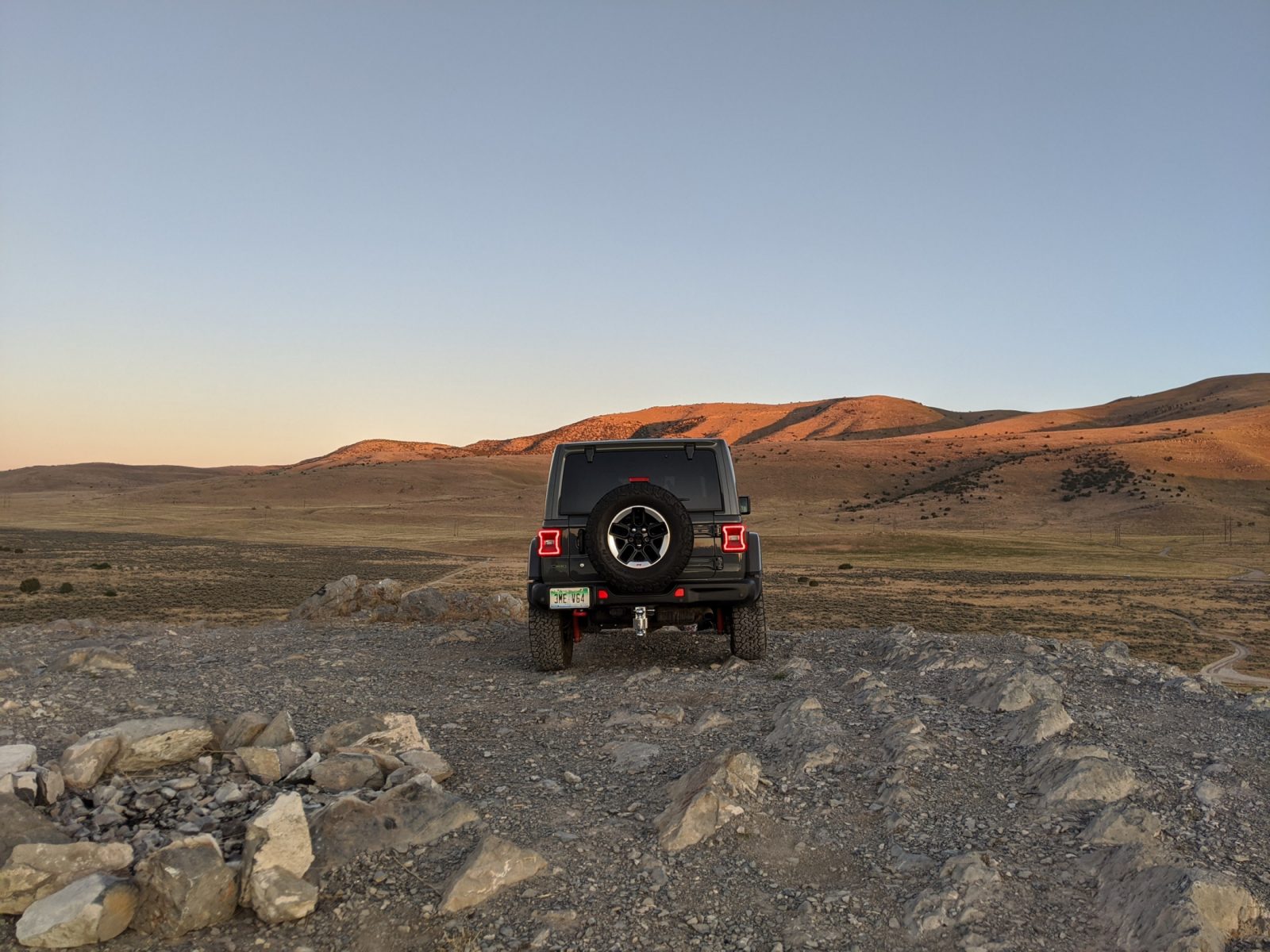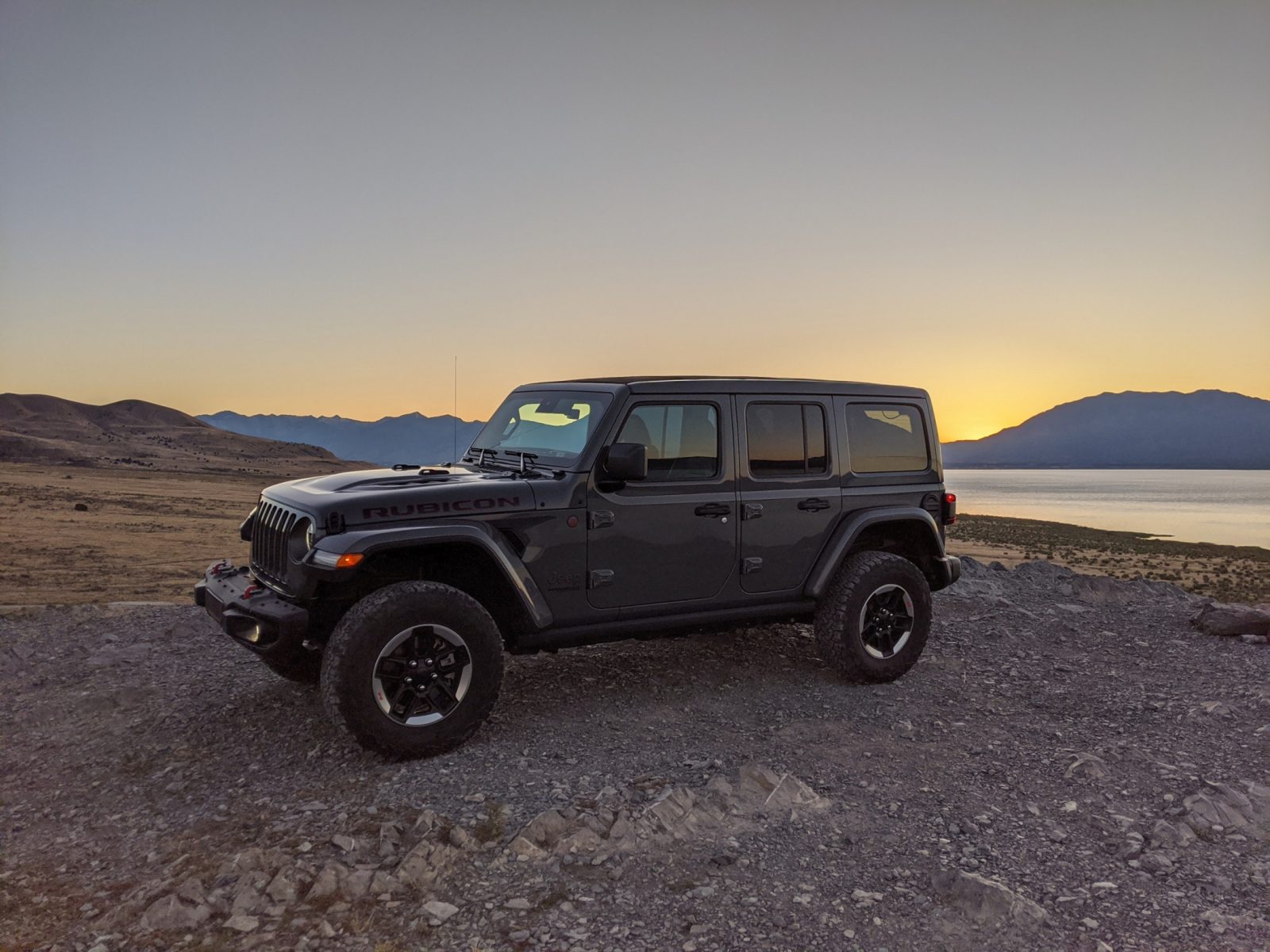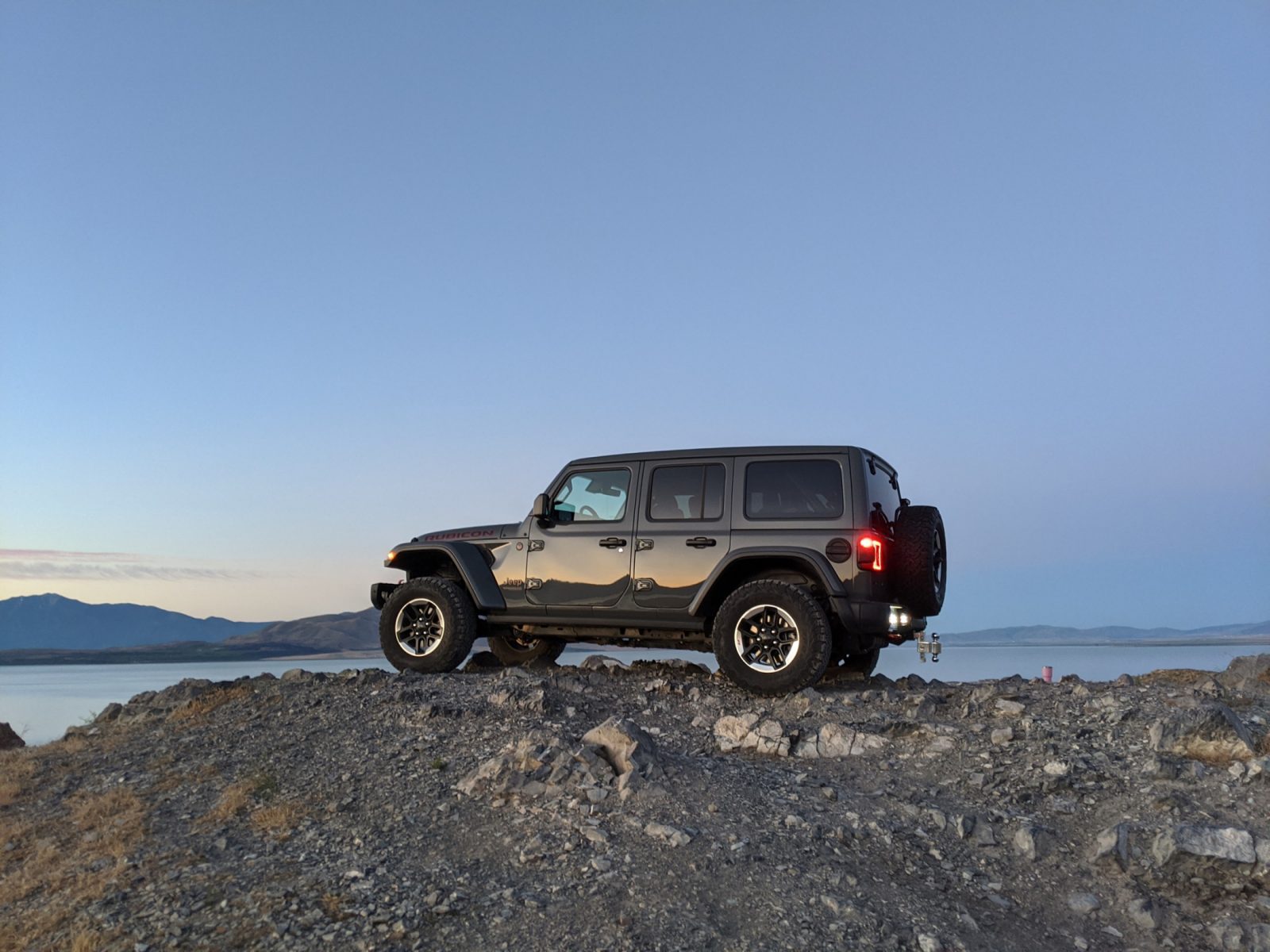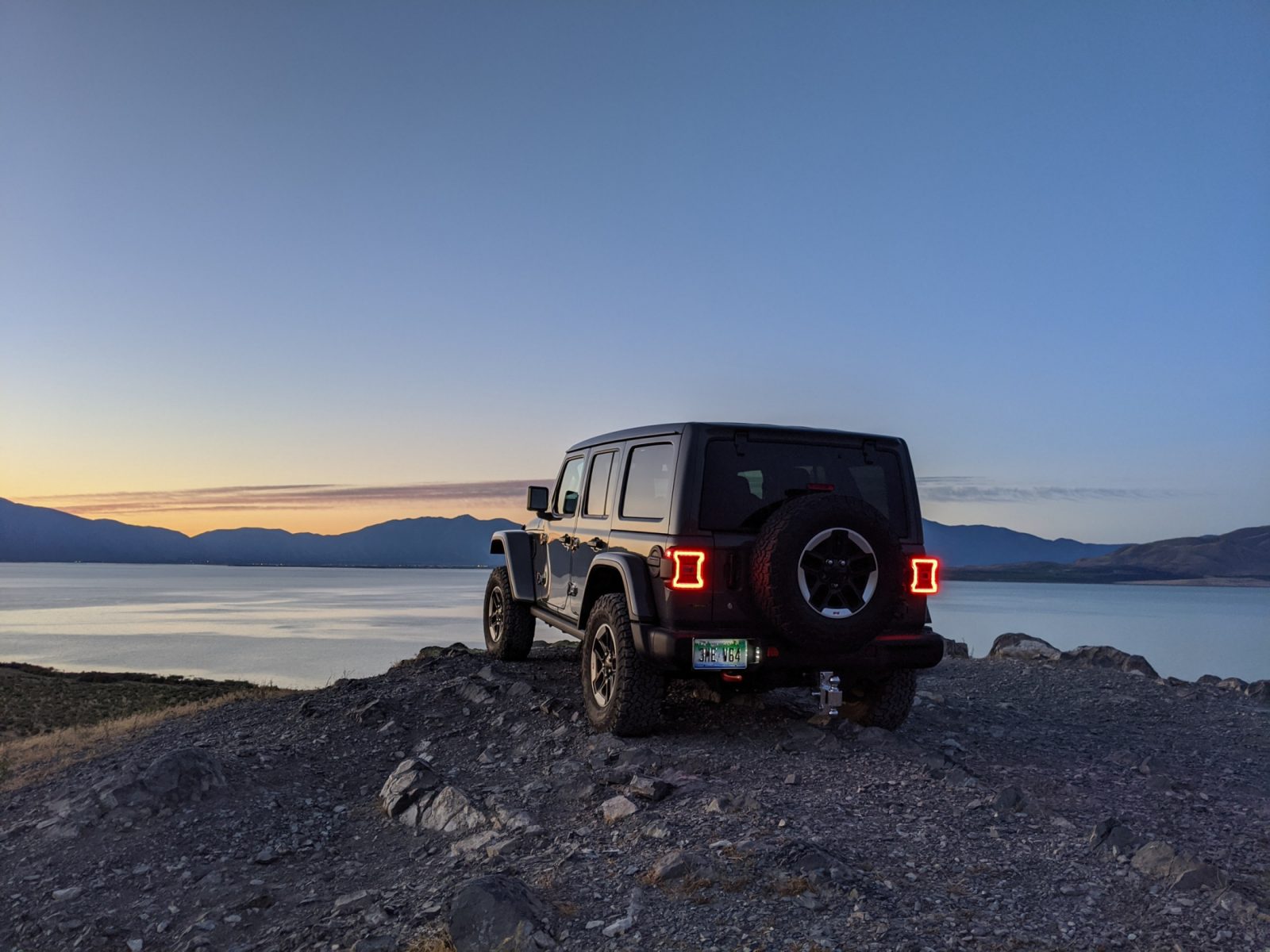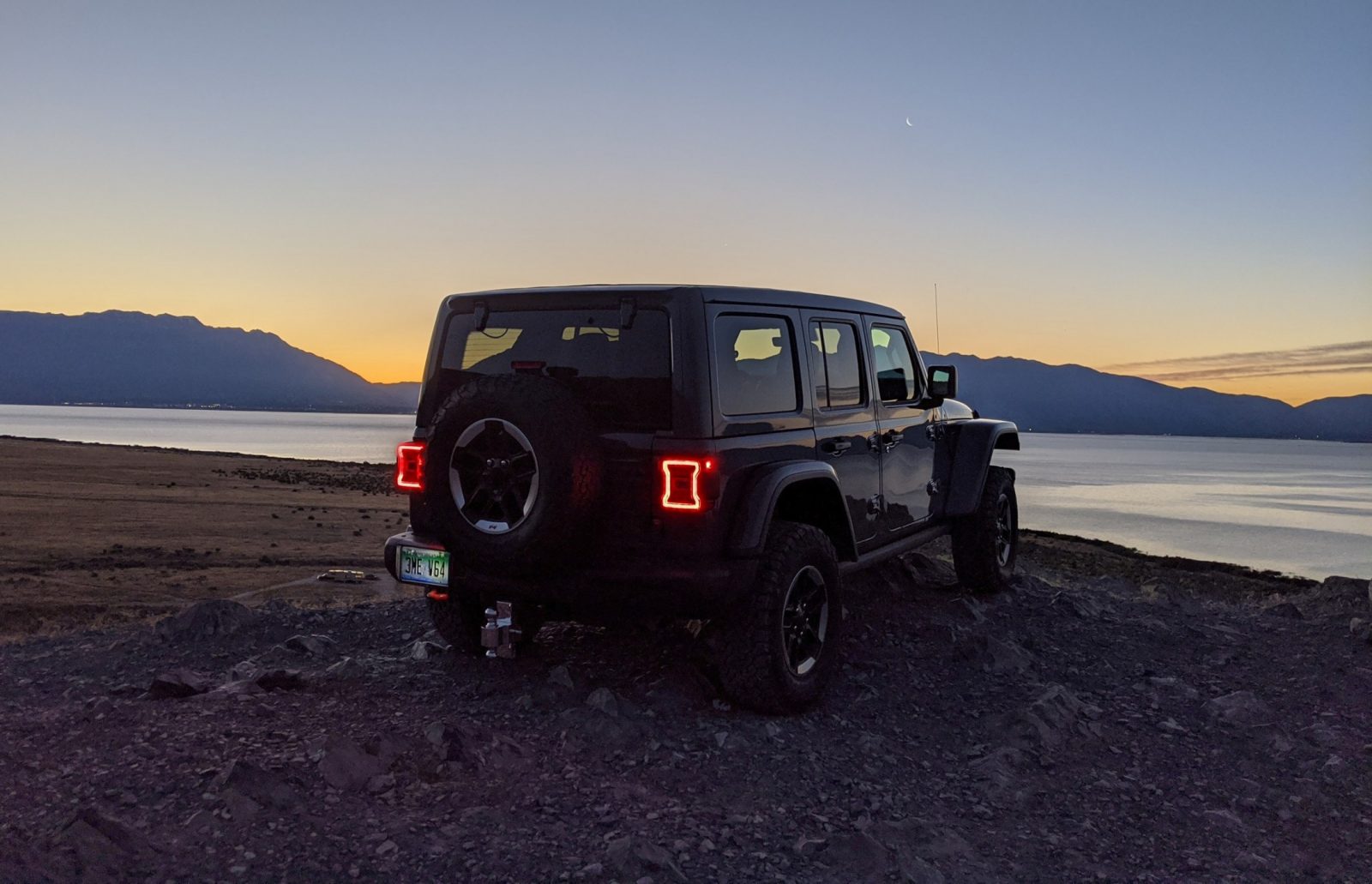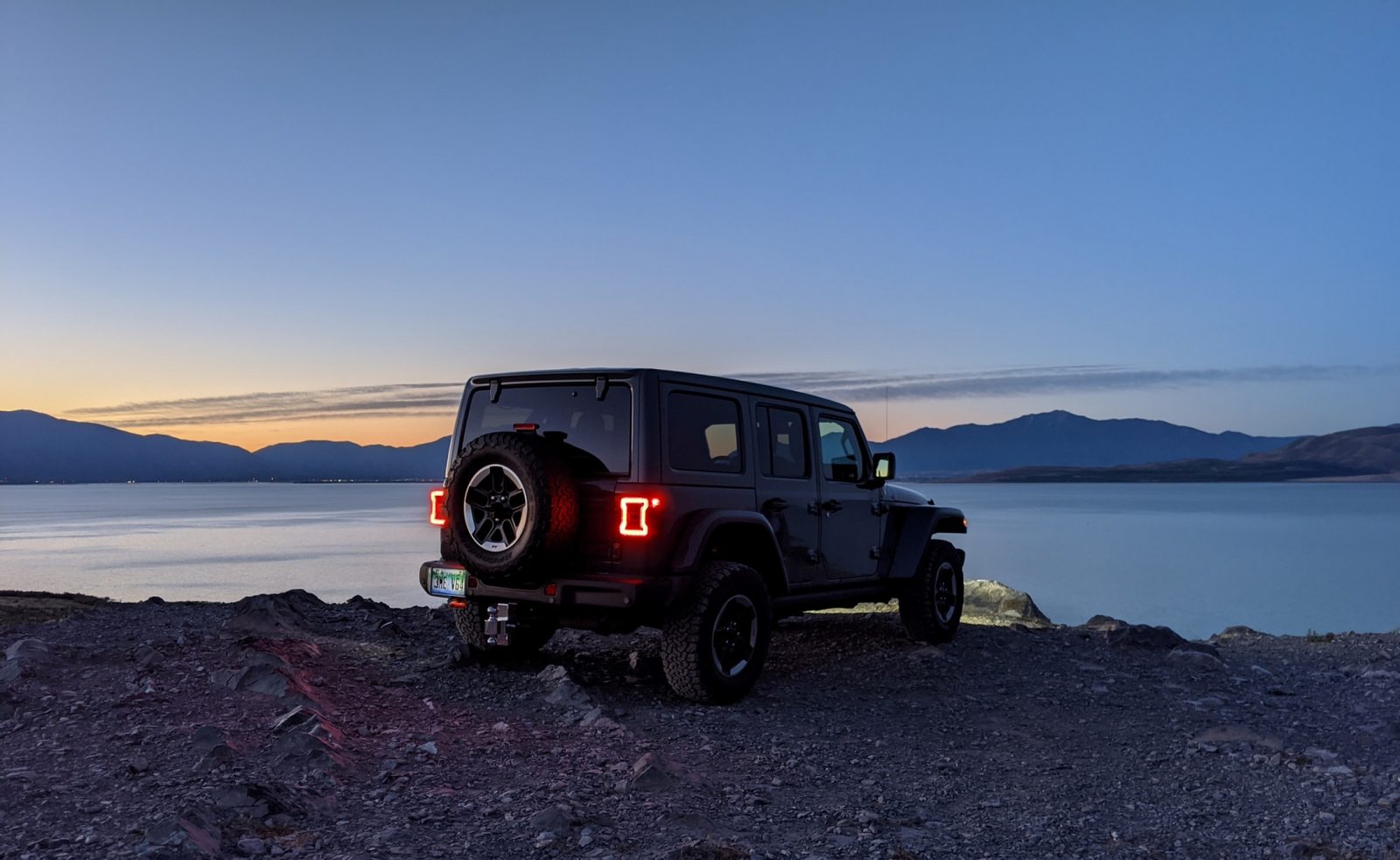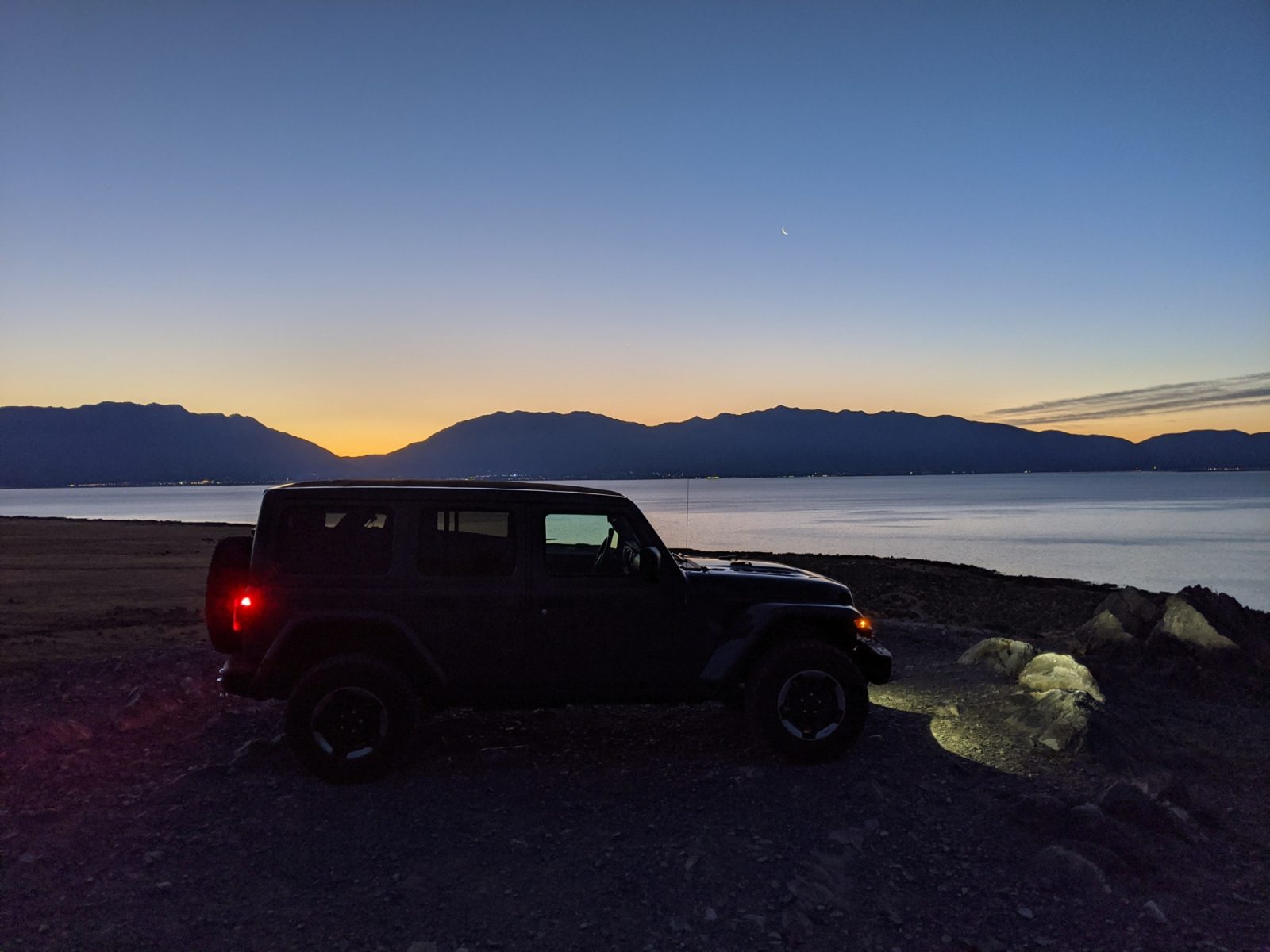After four years off, FCA brought back the 3.0-liter V6 EcoDiesel.
This time they’ve decided to add it to the Jeep Wrangler.
Enthusiasts call the newest Wrangler the JL. If it’s the four-door version they, add a “U,” and for the Rubicon trim they add an R.
Our test model was a 2020 JLUR EcoDiesel.
Video Intro
Overview
Arguably America’s most rugged vehicle, the newest Jeep Wrangler has been modernized without compromise to off-road ability.
The Jeep brand is FCA’s top seller in the U.S., and the Wrangler is a big portion of that. In order to please a wider array of people while keeping the loyalists on board, the JL Wrangler has been given many creature comforts that were not previously available.
On-Road
Highway driving has always been rough for the Wrangler; not so in the JL. We found the steering to be predictable, steady, and precise at high speeds, even with the 33-inch A/T tires. The diesel engine has no problem propelling the Wrangler at the highest of speed limits in the U.S. It’s never fast, but it can always accelerate and holds speed well. Climbing steep grades at freeway speeds is no problem. There is still a lot of wind noise at higher speeds, which is to be expected from a vehicle with a removeable top and doors.
It’s worth noting that the EcoDiesel has a much further range than the gas engine options due to an increase in fuel mileage. We averaged just under 24 mpg during our time with the JLUR, and that included a decent amount of off-pavement driving.
For low speed maneuvering on pavement, the large tire sidewalls are noticeable. There is a little bit of give in them, which makes the steering feel less precise. The turning radius is a little large for a vehicle of this size, but so are the 33-inch tall by 11.5-inch wide tires. By no means is this an on-road sports SUV, like so many on the market today.
One major reason for purchasing a Jeep is because of the massive aftermarket support. That continues with the JL, meaning that anybody can easily make their Jeep unique from any other Wrangler out there. Adding a lift and bigger tires is easily done, and there are plenty of options to choose from, including one from Mopar. With the Wranglers of the past, the larger tires would really hurt power and fuel economy, but with the 442 lb-ft of torque in the EcoDiesel, larger tires won’t be much of a problem.
Off-Road
Jeep was born out of a go anywhere “general purpose,” or GP vehicle, in WWII and off-road prowess has always been a key design factor for the brand. Continuing this trend, the Rubicon comes equipped with locking front and rear differentials, a 4:1 low range transfer-case, 4.1:1 final drive ratio and disconnecting front sway bar. This means the JLUR with an automatic transmission has a 77.2:1 crawl ratio. The approach departure angles are very high, but in the four-door version, the breakover angle isn’t quite as good as some other vehicles on the market. The front bumper is high off the ground and short in width, allowing for the front tires to roll over anything in their path. The JLUR is so off-road capable that we couldn’t find its limits in our testing.
Jeep continues to put solid axles, front and rear, under the Wrangler. This setup is excellent for low speed off-roading where a lot of articulation is important, but it hinders high speed control. The ride was just too harsh to meet our 20-mph goal over the rough section of dirt and gravel road that other off-road oriented vehicles have managed. To smooth the ride, we ran the same route in 4wd high with the anti-sway bar disconnected, but there were a few points where our speed was above 18mph, and the anti-sway car reconnected automatically. The solid axles make for a lot of side to side movement and harsh hits over the larger bumps. We hope Jeep will make a high-speed Mojave trimmed version of the Wrangler as is found in the Gladiator.
Off-Road Video
The next test we performed was the articulation hill test. Even with the sway bar locked, the JLUR was having a hard time lifting a wheel on the articulation test hill. Like all other vehicles we’ve tested, it couldn’t make the climb in 2wd. Switching to 4wd, the JLUR made the climb with a little wheel spin. Disconnecting the anti-sway bar made the climb even easier, as it allowed for the wheels to have better contact with the ground. There wasn’t really a need to engage the lockers, but we tried it anyway. Once the rear was locked, wheel spin was basically eliminated and with front and rear locked, there was no slip. However, locking the differentials also caused some driveline binding, even on our dusty test surface.
The final test in our normal testing regimen was the steep hill climb. No vehicle we’ve tested has made this climb in 2wd, and even with the aggressive 33-inch tires, the JLUR couldn’t make it either. It is worth noting that the neither of the differential locks can be engaged unless the vehicle is in 4wd low, so in 2wd, the rear diff only had the braking system to transfer power side to side.
Once in 4wd, the Rubicon was able to make the climb up the hardline of the test hill, but it struggled quite a bit. This was really similar to the Ram Rebel. It appears that in FCA vehicles with locking differentials FCA reduces the amount of brake intervention and relies more on the locking differentials. This is a good thing, as applying the brakes reduces the amount of power put down to the ground. With the push of a button, the anti-sway bar can be disconnected, which helped a little with the climb, but it still struggled.
Shifting into 4wd low, the climb was a little easier, but there was still a lot of wheel spin. Engaging just the rear locker made the climb an easy task. Further locking the front differential almost completely eliminated wheel spin, allowing for the most controlled climb we’ve ever had.
To test the increase in articulation from the anti-sway bar disconnect, we climbed a boulder with the bar connected, and then disconnected. There was a noticeable difference of close to 3-inches more droop in our testing.
As part of the off-road testing, we made a trip to an old train tunnel. It involved higher speed driving on well-maintained gravel roads, and then a short section of technical driving. Nothing in this area was able to push the limits of the Jeep, but we were able to get a better feel of how the JLUR handled various terrains.
Finally, we decided to have some fun and did a stream crossing. The JLUR has a 30-inch fording depth, and the crossing we attempted was closer to 24-inches. The entry into the stream was gradual, but the bank on the other side was quite steep. Taking no risks, we put it into 4wd low, locked the differentials, and disconnected the anti-sway bar. Turns out the crossing was easier than expected in the JLUR, but other vehicles with lower approach angles would have struggled getting up the bank.
Conclusion
Jeep is known for its off-road capability, and the 2020 Wrangler Unlimited Rubicon EcoDiesel delivers. It has better on-road manners than any Wrangler before it and remains a stalwart off-roader.
The EcoDiesel finally brings the right amount of torque to the Wrangler and greatly increases the fuel mileage. If we were looking for a daily driver that could also get into — and out of — some really rough spots, the Wrangler EcoDiesel would be one of our top choices.
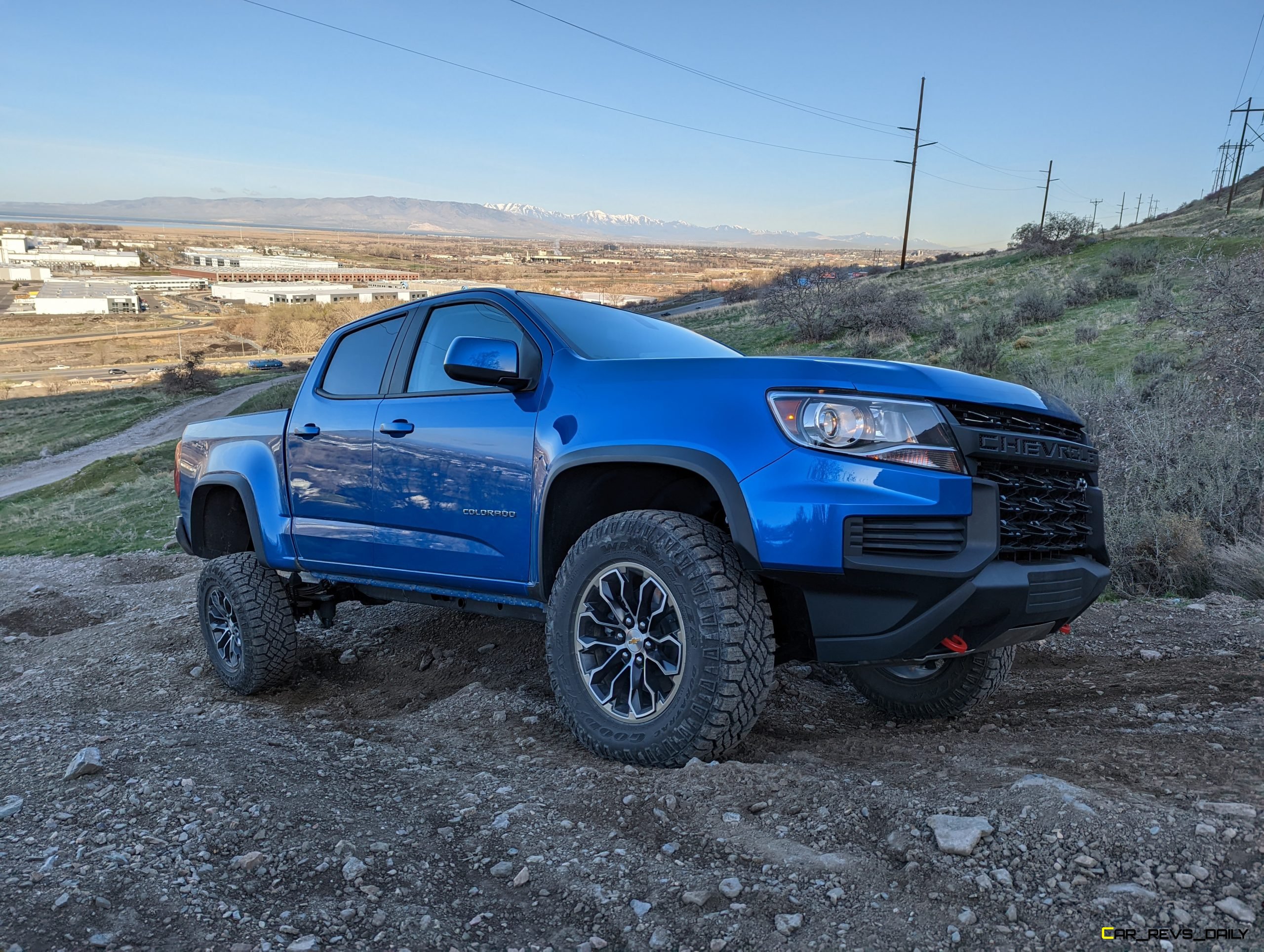
Matthew Barnes is an experienced towing expert. He works as a mechanical engineer and his day job involves testing a variety of vehicles while towing trailers of all types and sizes. Matt shares his knowledge by writing for automotive news outlets in the evenings. When he’s not working he can be found spending time in the great outdoors with his family. He enjoys camping, hiking, canyoneering, and backpacking. Whenever possible he spends time riding in or on any power sports vehicle he can find and claims he can drive anything with a motor, which probably isn’t true.
Matt lives in the Utah mountains and often posts cool off-roading videos to his Instagram and YouTube channel.



